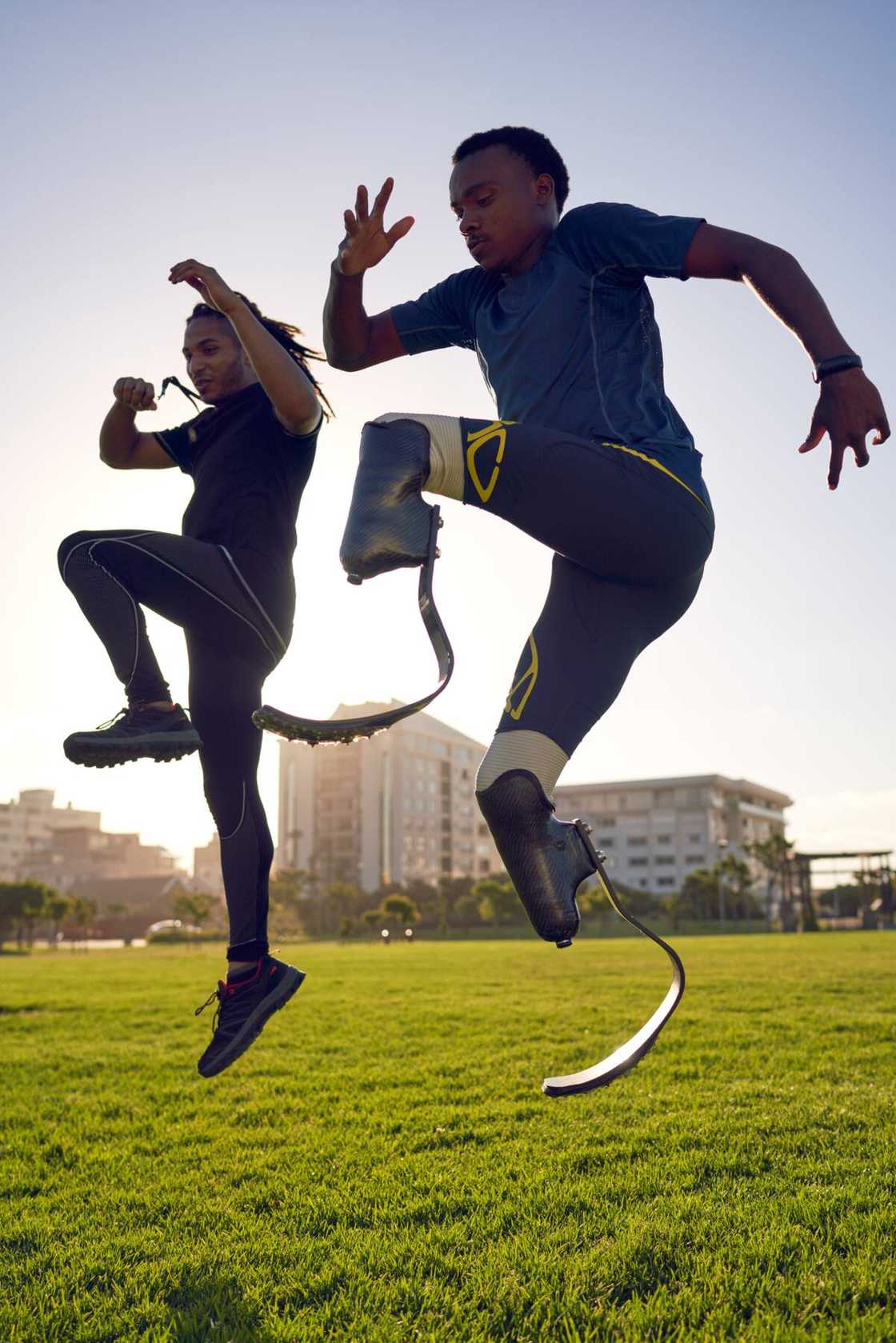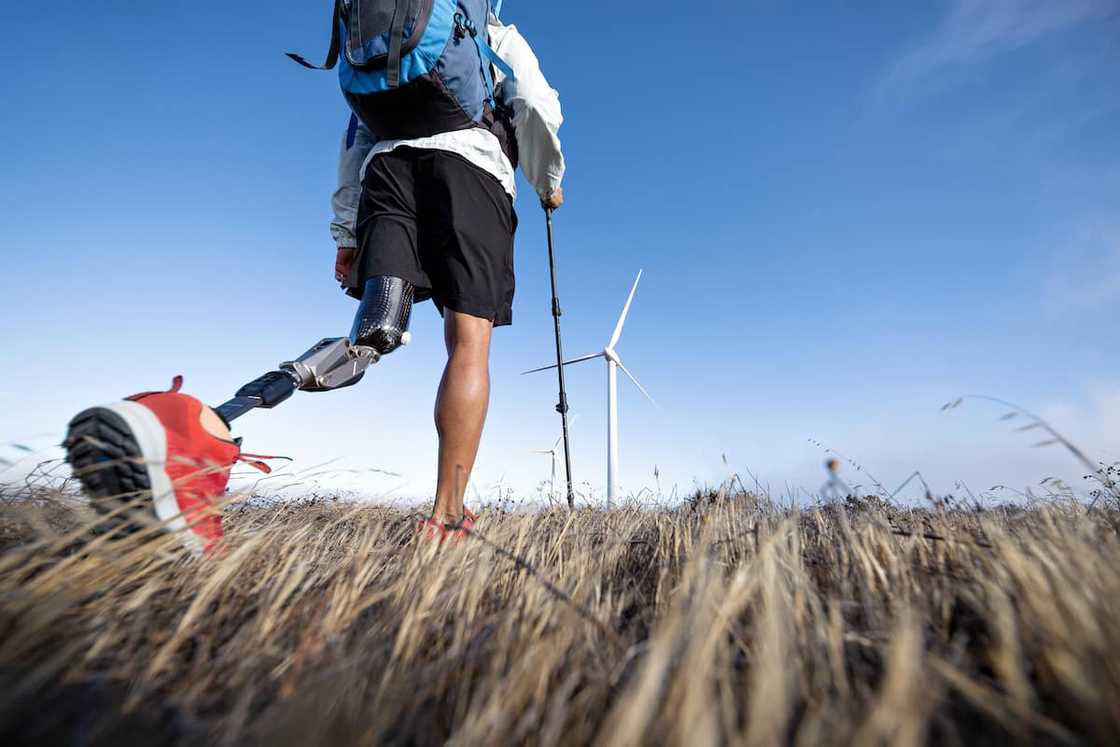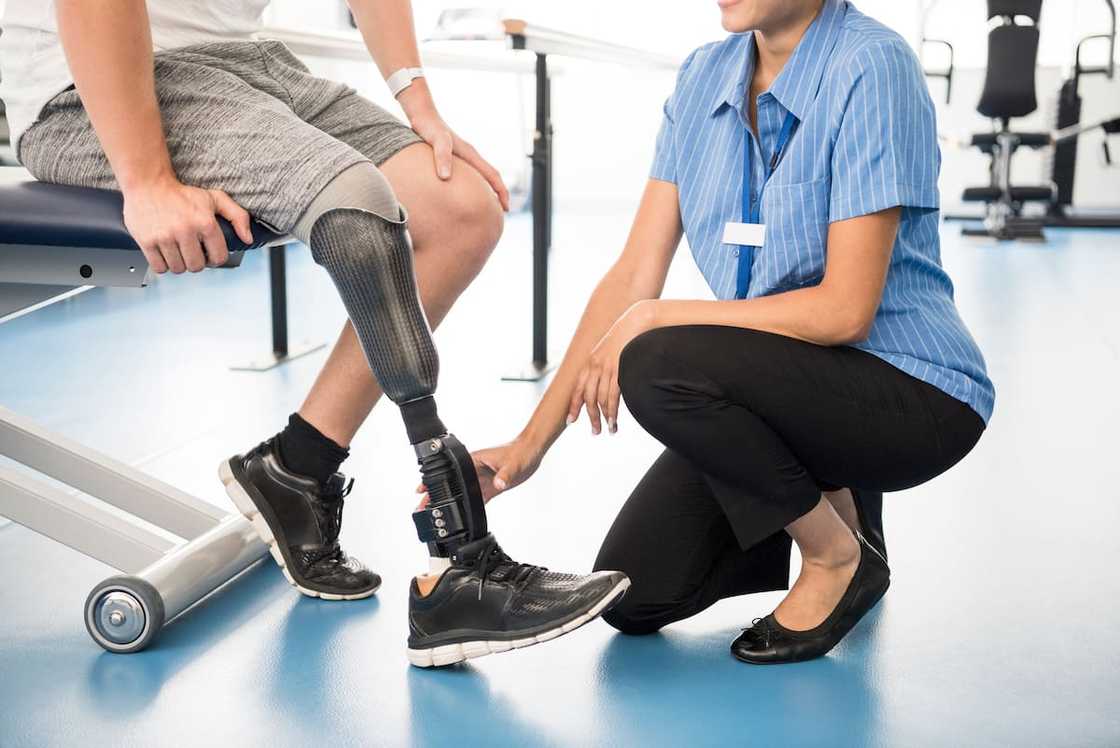What is an artificial leg price in South Africa in 2024?
Over 1 million annual limb amputations are done globally, and the International Diabetes Federation predicts that the number of amputees will reach 435 million by 2030. Below-knee amputations are the most common, but thanks to technology and science, amputees can use their limbs again using prostheses. This article highlights the price of artificial legs in South Africa and other factors to consider.

Source: Getty Images
TABLE OF CONTENTS
- How much does a prosthetic leg cost in South Africa?
- Can I get a free prosthetic leg in South Africa?
- What should you consider when getting a prosthetic leg?
- What are the signs of a poorly fitted artificial leg?
- Where can you find artificial limbs in South Africa?
- How long should you wear a prosthetic leg?
- How far can you walk with a prosthetic leg?
- How many hours a day can you wear an artificial leg?
- How much does an artificial leg cost in Kenya?
Amputation is usually the last medical option following unsuccessful endovascular or vascular treatment of the affected area. Limb problems are caused by ailments like osteomyelitis (infection of the bones), diabetes (most common), blood clots, or blood vessel disease, also called peripheral vascular disease (PVD).
How much does a prosthetic leg cost in South Africa?
How much does a prosthetic foot cost in South Africa? The price of artificial legs in South Africa varies according to grade. A new single lower-grade prosthetic leg for sale costs about R20,000, while a higher-quality one costs between R50,000 and R160,000. The price of a below-knee prosthesis is generally lower.

Read also
Matric results: Expert proclaims 'active citizenship' is key to systemic change in education
Statistically, below-knee amputees usually regain normal mobility and can return to their routine activities. Amputees are advised to get the approval of a qualified prosthetist and orthotist before getting a custom-made prosthesis that fits within their budget.
Can I get a free prosthetic leg in South Africa?
Yes. The Amputee Blade Runners (ABR) is a South African NGO established in 2011 by prosthetists Aaron and Ryan to provide free running artificial legs for amputees. The two came up with the programme because insurance companies in the country do not cover amputees in athletics.

Source: Getty Images
What should you consider when getting a prosthetic leg?
Not every amputee qualifies for prostheses, and before getting one, you and your prosthetist should consider the following:
- If there is enough soft tissue to cushion the remaining bone
- The amount of pain you are feeling.
- Range of motion of the residual limb
- If the remaining leg is healthy
- The amputee's level of activity before the amputation
- Amputee mobility goals
- Type of amputation (if below or above the knee)
- What caused the limb amputation, and if it will affect the health of the residual limb.
What are the signs of a poorly fitted artificial leg?
A poorly fitted prosthesis causes discomfort and prevents proper functioning. You need to adjust the equipment if you notice the following;
- The artificial leg feels heavy and hard to move, indicating a loose fit.
- The residual limb has blisters or open sores, indicating the fit is too tight or loose. In this case, you must see a doctor to treat the wounds and a prosthetist for advice on the way forward.
- When you walk, the residual limb moves up and down the socket (pistoning), indicating a loose fit.

Source: Getty Images
Where can you find artificial limbs in South Africa?
You can find artificial limbs in several places across South Africa, including but not limited to the following;
- M de Barros Orthotics and Prosthetics in Cape Town
- Van Emmenis Orthotics and Prosthetics in Pretoria
- Orthoworx with branches across South Africa
- Du Toit Orthotics and Prosthetics in Gauteng
- Meintjes & Neethling Pretoria
How long should you wear a prosthetic leg?
A temporary prosthesis prescribed after your amputation lasts for a few months. After the residual limb stabilizes, you can get an artificial leg that lasts between three to five years. You should also change the prosthesis if you feel pain, discomfort, or loss of stability.
Proper maintenance of the artificial limb, especially cleaning around the socket area, is essential to ensure comfort and durability. Your prosthetist will advise on the appropriate cleaning process.
How far can you walk with a prosthetic leg?
The distance an amputee can cover depends on the type of amputation and how long they have used the artificial limb. Some people can comfortably walk as far as 305 feet.
How many hours a day can you wear an artificial leg?
Amputees are advised to follow the schedule recommended by their therapist. In the beginning, you will wear the leg for a few minutes and increase the time along your physical therapy journey. You should also examine your limb condition whenever you remove the prosthesis.

Source: Getty Images
How much does an artificial leg cost in Kenya?
The cost varies with the type of amputation, size, and customization needs. The price can be as low as Khs 40,000 (about $350) for a below-the-knee prosthesis to over Ksh 450,000 (about $4,000).
Artificial leg prices in South Africa are affordable, giving thousands of amputees hope to walk again. After getting the right fit, physical therapy automatically becomes part of your lifestyle, and you can do things independently.
READ ALSO: Types of nurses in South Africa in order of ranks 2022
Briefly.co.za highlighted nursing ranks available in South Africa. There are currently three major types; registered or nursing sisters, enrolled nurses and enrolled nursing auxiliaries.
Caregivers are crucial in the recovery journey of patients. According to the South African Nursing Council (SANC), the profession has been growing, although more nurses are needed across the country.
Source: Briefly News





